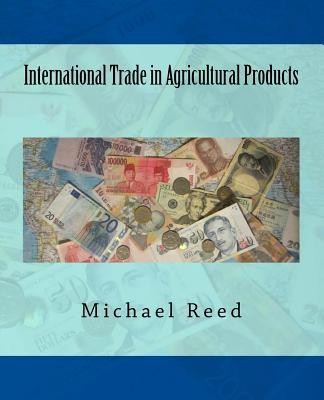
- We will send in 10–14 business days.
- Author: Michael Reed
- Publisher: CreateSpace Independent Publishing Platform
- Year: 2016
- Pages: 464
- ISBN-10: 1519738099
- ISBN-13: 9781519738097
- Format: 19.1 x 23.5 x 2.4 cm, softcover
- Language: English
- SAVE -10% with code: EXTRA
Reviews
Description
International Trade is vital to the agricultural sector in many countries of the world, especially the United States. International trade allows productive capacity in agriculture to expand without seriously eroding prices, and there is no question that trade will become more critical to many nations in the future. It is surprising, then, that there is no up-to-date text book at the undergraduate or graduate level that provides a complete treatment of the major issues in international agricultural trade. This book is an effort to provide that complete treatment.This book covers all the essential topics for an agricultural trade policy course: gains from trade, agricultural trade policies (of exporters and importers), exchange rates, and multilateral trade negotiations. These have been key elements in agricultural trade classes for decades. These topics are fundamental to understanding how the current trade regime works and which parties benefit and lose as the regime changes.The book also presents concepts on issues that have become more important to a fundamental understanding of agricultural trade: the environment, preferential trade agreements, technical barriers, and flexible exchange rates. Without a clear understanding of these new issues in agricultural trade, one cannot fathom where world agriculture has been and is going.The final four chapters of the book cover company issues that shed light on what helps firms succeed in international markets. This should help instructors who teach in programs that are more agribusiness oriented. The chapters on foreign direct investment and competitiveness take a large-picture view of factors influencing firm behavior and success, while the chapters on export analysis and strategy are oriented toward steps that firms must take in entering and expanding their international markets.The chapters on Europe and China are quite different than the others. The European Union is mentioned throughout the book, so it is important to understand the unique E.U. context. China has been such a large focus for food markets in recent years that it also merits a chapter. One cannot understand world agricultural markets without understanding these important countries.This text is written for those who have had an intermediate microeconomics class because trade issues can be understood best through extensive graphical analysis. The book attempts to make linkages back to everyday life through examples and case studies so that the learning experience is enhanced. Any professor can find numerous current events that support the chapters during a typical semester.
EXTRA 10 % discount with code: EXTRA
The promotion ends in 18d.12:06:23
The discount code is valid when purchasing from 10 €. Discounts do not stack.
- Author: Michael Reed
- Publisher: CreateSpace Independent Publishing Platform
- Year: 2016
- Pages: 464
- ISBN-10: 1519738099
- ISBN-13: 9781519738097
- Format: 19.1 x 23.5 x 2.4 cm, softcover
- Language: English English
International Trade is vital to the agricultural sector in many countries of the world, especially the United States. International trade allows productive capacity in agriculture to expand without seriously eroding prices, and there is no question that trade will become more critical to many nations in the future. It is surprising, then, that there is no up-to-date text book at the undergraduate or graduate level that provides a complete treatment of the major issues in international agricultural trade. This book is an effort to provide that complete treatment.This book covers all the essential topics for an agricultural trade policy course: gains from trade, agricultural trade policies (of exporters and importers), exchange rates, and multilateral trade negotiations. These have been key elements in agricultural trade classes for decades. These topics are fundamental to understanding how the current trade regime works and which parties benefit and lose as the regime changes.The book also presents concepts on issues that have become more important to a fundamental understanding of agricultural trade: the environment, preferential trade agreements, technical barriers, and flexible exchange rates. Without a clear understanding of these new issues in agricultural trade, one cannot fathom where world agriculture has been and is going.The final four chapters of the book cover company issues that shed light on what helps firms succeed in international markets. This should help instructors who teach in programs that are more agribusiness oriented. The chapters on foreign direct investment and competitiveness take a large-picture view of factors influencing firm behavior and success, while the chapters on export analysis and strategy are oriented toward steps that firms must take in entering and expanding their international markets.The chapters on Europe and China are quite different than the others. The European Union is mentioned throughout the book, so it is important to understand the unique E.U. context. China has been such a large focus for food markets in recent years that it also merits a chapter. One cannot understand world agricultural markets without understanding these important countries.This text is written for those who have had an intermediate microeconomics class because trade issues can be understood best through extensive graphical analysis. The book attempts to make linkages back to everyday life through examples and case studies so that the learning experience is enhanced. Any professor can find numerous current events that support the chapters during a typical semester.


Reviews